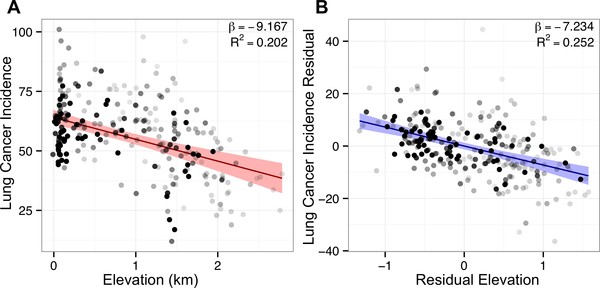Higher rates of lung cancer are correlated with lower elevations. The only consistent factor that was found to be associated with this fact was the difference in oxygen concentration with elevation. The most detailed analysis of this phenomenon ever conducted was reported in the edition of the journal PeerJ by Kamen P. Simeonov from the Perelman School of Medicine at the University of Pennsylvania and Daniel S. Himmelstein with the University of California at San Francisco.
The study does not necessarily mean that exposure to higher levels of oxygen causes lung cancer. The research does show that changes in oxygen concentration in the air with changes in elevation accounted for a 13 percent increase in lung cancer cases reported in California between 2009 and 2011. Oxygen concentration changes with elevation from an average of 21 percent of the Earth’s atmosphere.
The study correlates with previous results from two studies in the same areas of California. The probable cause of the higher incidence of cancer produced in areas of low elevation and high oxygen concentration is the reactivity of the oxygen molecule. The researchers examined the same data for any correlation between oxygen concentration and breast, colorectal, and prostate cancer and found little evidence that oxygen concentration variations played a role in the incidence of these cancers.
The study examined the U. S. Census data for race, economic status, and pollution levels. People that live at lower elevations have a higher risk of getting lung cancer and oxygen concentration is a factor. Oxygen does not cause lung cancer but oxygen may react with soot, tobacco smoke, or another carcinogen to increase the potential for lung cancer.















